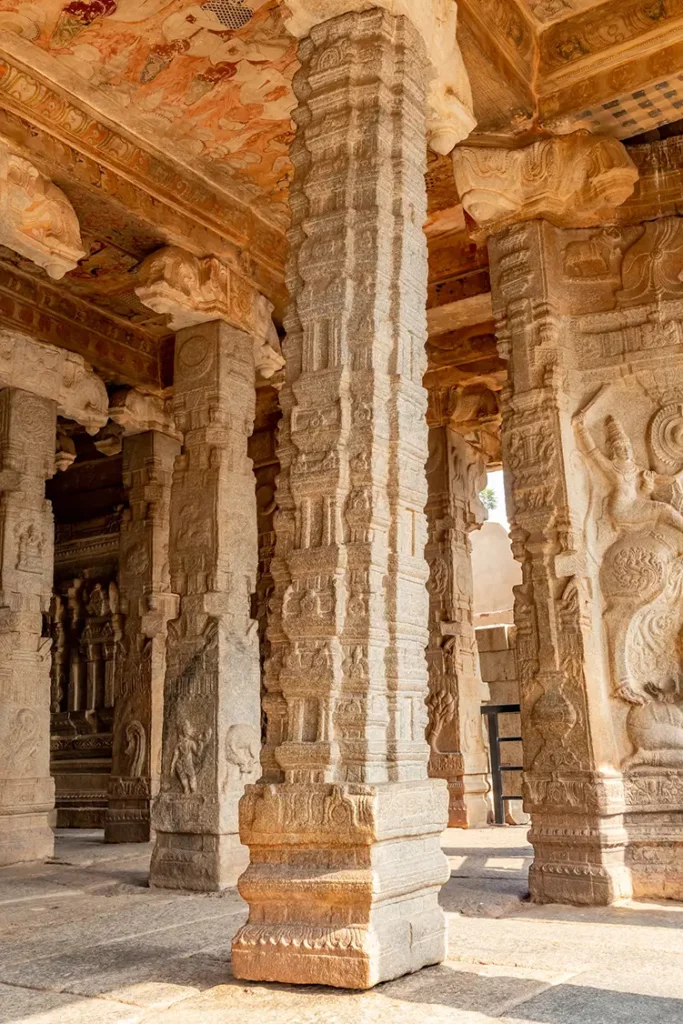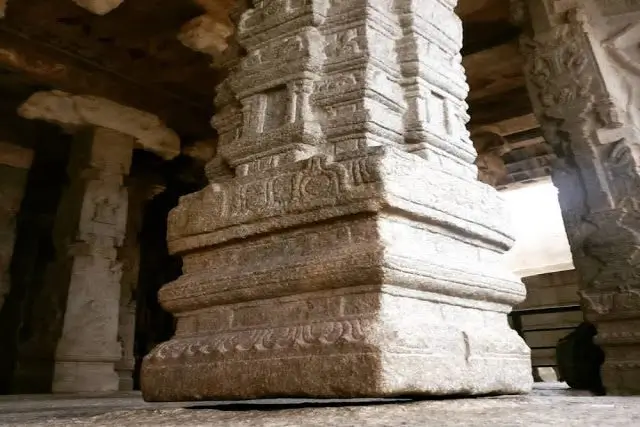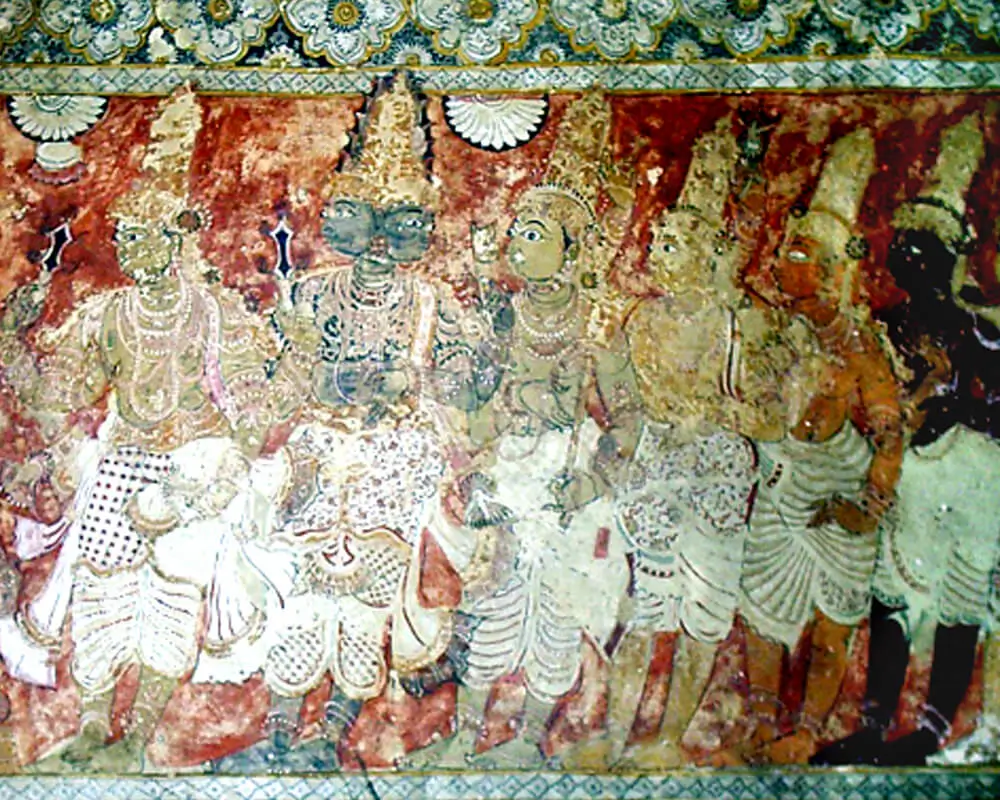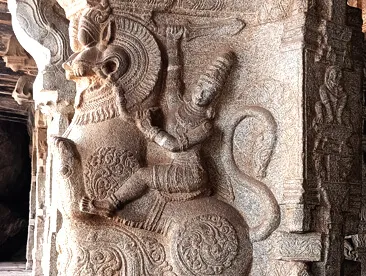Hanging Pillar
Explore the Enigma of the Hanging Pillar at Lepakshi Veerabhadra Temple
Have you ever encountered a pillar that seems to defy the laws of physics? A remarkable architectural wonder awaits you at the Veerabhadra Temple in Lepakshi, Andhra Pradesh, India – the Hanging Pillar of Lepakshi. For centuries, this extraordinary pillar has intrigued visitors, sparking curiosity about its unique design and the intriguing mythological tales that envelop it. In this article, we embark on a fascinating journey to unravel the mysteries of the Hanging Pillar and its profound connection to Hindu mythology.
Nestled in the quaint village of Lepakshi in the Sri Sathya Sai district of Andhra Pradesh, the Veerabhadra Temple stands as a testament to architectural brilliance. This temple complex is adorned with intricate carvings, captivating frescoes, and, most notably, the enigmatic Hanging Pillar—a structure that has not only piqued the interest of researchers and historians but has also captured the hearts of devotees.
The temple proudly displays the magnificent Vijayanagara architectural style, serving as a living relic of a glorious bygone era.
As you step into the main hall of the Veerabhadra Temple, your gaze is inevitably drawn to the Hanging Pillar. This awe-inspiring pillar appears to hang suspended in mid-air, seemingly defying the very laws of gravity and leaving spectators in a state of wonderment at its engineering marvel.
Legend has it that the Hanging Pillar of Lepakshi is intricately linked to the epic tale of the Ramayana. It is said that during Lord Rama’s return from Lanka, he and his vanara (monkey) army paused at Lepakshi. Impressed by the temple’s divine beauty, Lord Rama instructed his brother, Lord Lakshmana, to transport a pillar from Ayodhya and place it within the temple premises. However, as fate would have it, Lord Lakshmana accidentally dropped the pillar during transit, leading to its miraculous suspension in mid-air.



The Dance of Deities:
Within the temple complex, the Natyamandapa, or the hall of dance, is a captivating space adorned with sculptures that capture the essence of movement and rhythm. The pillars here feature lifelike representations of musicians, dancers, and divine performers, showcasing the rich cultural heritage of India’s classical arts.
Divine Presence in the Garbhagrihas:
The sanctums or garbhagrihas of Lepakshi Temple house sculpted deities that invoke a sense of devotion and reverence. Each deity is meticulously crafted, with attention to every detail of their divine form. The presence of these sculptures enhances the spiritual ambiance of the temple, inviting devotees to connect with the divine.
Intricate Details and Symbolism:
What sets Lepakshi Temple’s sculptures apart is the level of intricacy and symbolism in each carving. From the smallest jewelry piece adorning a deity to the expressive eyes of a celestial figure, every element holds deeper significance. These sculptures not only serve as artistic wonders but also as a window into the profound spiritual beliefs of the time.
Preservation and Legacy:
Efforts to preserve and protect the sculptures of Lepakshi Temple are ongoing. Organizations like the Archaeological Survey of India (ASI) play a crucial role in safeguarding these timeless treasures, ensuring that future generations can continue to marvel at the artistry of the past.
The sculptures of Lepakshi Temple are not merely stone figures; they are a testament to the craftsmanship, spirituality, and cultural richness of an era long gone. As you wander through the temple’s hallowed halls, take a moment to appreciate these masterpieces in stone, for they are not just relics of the past but a living legacy of India’s artistic and spiritual heritage. Visit Lepakshi Temple to witness the dance of deities, the tales of epic heroes, and the enduring beauty of sculpted artistry.


The creation of the Hanging Pillar stands as a testament to the brilliance of ancient Indian engineering. It serves as a vivid reminder of the advanced knowledge and craftsmanship possessed by the architects and artisans of that era. Even in contemporary times, the pillar’s unique design continues to inspire awe and admiration.
Beliefs and Rituals Surrounding the Hanging Pillar
The Hanging Pillar has evolved into a sacred focal point for devotion and pilgrimage. Many devoutly believe that touching or passing objects beneath the pillar invokes good fortune and divine blessings. Devotees offer heartfelt prayers and seek the benevolent intervention of Lord Veerabhadra, making this pillar an integral part of their spiritual journey.
The Hanging Pillar’s Symbolic Significance
The Hanging Pillar at Lepakshi transcends its architectural marvel to hold profound symbolic meaning. Some interpret it as a representation of the divine power of Lord Shiva, who cradles the universe within His grace. Others view it as a metaphorical expression of the delicate equilibrium between the earthly and celestial realms, where the physical and the spiritual coexist harmoniously.
Unraveling the Mystery: Scientific Explanations
While myth and legend shroud the Hanging Pillar in mystique, some scholars propose scientific explanations for its unconventional construction. They suggest that the pillar’s suspended position could be attributed to ingenious engineering techniques, involving meticulous weight distribution and alignment with the temple’s architectural design.








